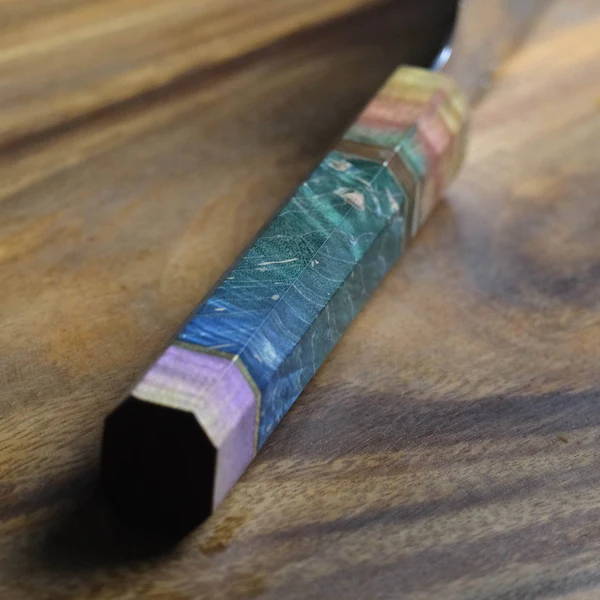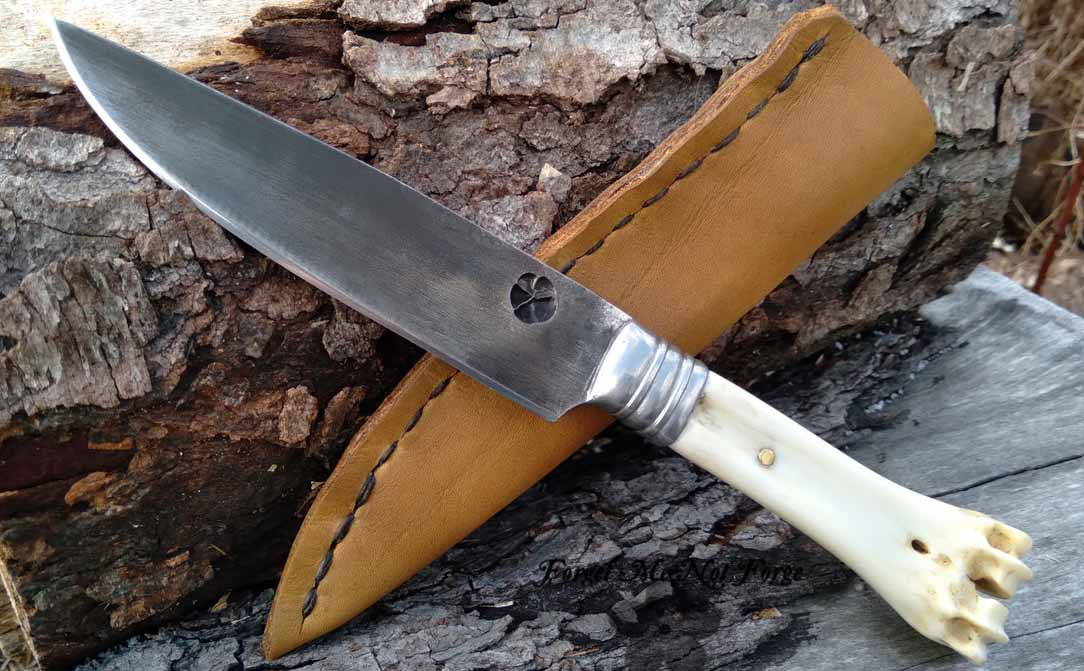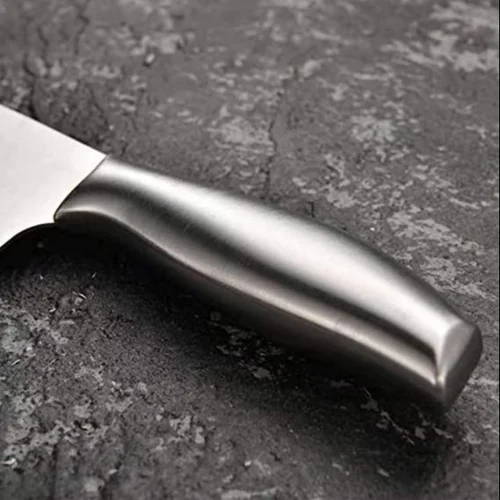Exploring Knife Handles:
Checkout the Different Classic & Modern Varieties

Historically Popular Knife Handles
Wood Handles
- Ebony, prized for its hardness and elegant black hue, comes with a sophisticated look.
- Walnut, with its warm brown tones and subtle grain, combines aesthetics with lightweight handling. It is famously used in Japanese knife handles.
- Magnolia is known for its moisture-absorbing properties and easy grip, ensuring secure handling even in challenging conditions.
- Teak stands out for its exceptional durability and weather resistance, accompanied by a golden-brown hue and pronounced grain.
- Burlwood offers both good looks and manageable weight and is available in diverse species with unique patterns.
- Cherry tree wood comes with a reddish-brown coloration and appealing grain, complemented by its lightweight nature and ease of crafting.
- Wenge, characterized by its dark brown hue and distinctive grain, excels in heavy-duty applications due to its remarkable hardness and relative lightness.

Bone Handles
Horn Handles
Metal Handles
- Brass: Brass, an alloy of copper and zinc, has been valued for its corrosion resistance and attractive golden hue. Brass handles were popular in both decorative and utilitarian knives, offering both durability and visual appeal. They were often intricately engraved or embellished with decorative elements.
- Silver: In some cultures, particularly among the wealthy or nobility, silver is used for knife handles. Silver handles are not only aesthetically pleasing but also showcase the owner's status and wealth.
- Copper:Copper: While not the most common material, copper was also one of the historically used materials for making knife handles. It offers a unique metallic hue and can be polished to a high shine. However, copper is relatively soft compared to other metals like steel or aluminum, so it may not provide the same level of durability and strength.

Modern Knife Handle Materials
Carbon Fibre Handles
Carbon Fibre Handles
-
G-10 - G-10 is a fiberglass laminate known for its exceptional toughness, hardness, and lightweight nature. It provides similar properties to carbon fiber but at a fraction of the cost.
-
Grivory - Another composite material, Grivory is a high-temperature resistant thermoplastic composite utilized in various industries, including automotive and aerospace. Its semi-crystalline structure offers excellent durability and heat resistance, contributing to its suitability for demanding knife applications.
- Micarta - It is a well-known brand of composite material crafted from layers of fabric such as linen, canvas, or fiberglass soaked in resin. This results in a sturdy and versatile handle material with a wide range of textures and colors available. Micarta handles offer enhanced grip and moisture resistance.




Leave a comment
This site is protected by hCaptcha and the hCaptcha Privacy Policy and Terms of Service apply.